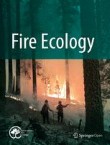Fire Ecology is the official journal of the Association for Fire Ecology.
Wetland Fire Scar Monitoring and Analysis Using Archival Landsat Data for the Everglades
The ability to document the frequency, extent, and severity of fires in wetlands, as well as the dynamics of post-fire wetland land cover, informs fire and wetland science, resource management, and ecosystem p...
